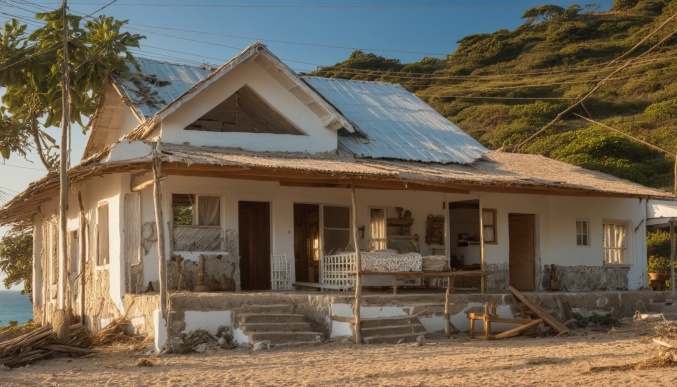The increasing frequency and severity of climate-related events has spurred a global conversation about climate adaptation features crucial for building resilient communities.
These features not only help mitigate the impacts of climate change but also enhance the quality of life for residents.
In this article, we delve into the definition and importance of climate adaptation, explore key features essential for urban areas, highlight the role of natural infrastructure, underscore the significance of community engagement, and examine successful case studies.
Additionally, we will look towards future trends in climate adaptation features, helping readers understand the steps their communities can take to thrive in an uncertain climate.


Natural Infrastructure: Utilizing Ecosystems for Resilience
Natural infrastructure plays a crucial role in enhancing climate adaptation features, utilizing ecosystems to mitigate the impacts of climate change while fostering resilience within communities.
By investing in natural solutions such as wetlands restoration, reforestation, and the preservation of coastal ecosystems, we can create a buffer against extreme weather events like flooding and hurricanes.
These ecosystems not only provide crucial services, such as water filtration and carbon storage, but they also support biodiversity and enhance the quality of life for local populations.
The integration of natural infrastructure into urban planning and development strategies presents a sustainable approach to climate adaptation.
By embracing these natural solutions, we can collaboratively work towards creating more resilient societies that can withstand the challenges posed by our changing climate.
Community Engagement in Climate Adaptation Planning
Community engagement plays a pivotal role in climate adaptation planning, ensuring that the initiatives reflect the needs and values of local populations.
Effective engagement strategies foster collaboration between community members, local governments, and experts, allowing for a comprehensive understanding of climate vulnerabilities.
Incorporating climate adaptation features such as green infrastructure, sustainable transportation options, and resilient building practices often benefits from local insights and indigenous knowledge, which can lead to more innovative and relevant solutions.
These features not only enhance the ecosystem resilience but also improve the quality of life for residents.
By actively participating in the planning process, communities can provide essential feedback and support, making it easier to implement measures that are widely accepted and effective in mitigating climate impacts.

Case Studies: Successful Implementation of Adaptation Features
In recent years, case studies highlighting successful implementation of climate adaptation features have emerged from various regions around the world, showcasing innovative strategies to combat the effects of climate change.
For instance, in the coastal city of Miami, adaptive strategies such as elevating roadways and enhancing stormwater management systems have significantly reduced flooding risks, demonstrating the importance of proactive planning.
Similarly, the city of Copenhagen has introduced green roofs and urban parks that not only provide recreational spaces but also improve urban biodiversity, illustrating how climate adaptation features can benefit communities socially and environmentally.
These examples not only reveal the effectiveness of such features in mitigating climate impacts but also serve as inspiring models for other cities aiming to incorporate resilience into their development plans.
Future Trends in Climate Adaptation Features
As the world increasingly grapples with climate change, the importance of climate adaptation features becomes paramount in real estate development, particularly in coastal and vulnerable areas.
In Costa Rica, known for its stunning biodiversity and commitment to sustainability, real estate developers are keenly focused on integrating innovative climate adaptation features into their projects.
These initiatives include elevated structures to mitigate flood risks, green roofs that promote insulation and reduce heat absorption, and rainwater harvesting systems that enhance water resilience.
Additionally, the use of permeable paving materials to manage stormwater runoff is gaining traction.
As Costa Rica continues to lead in environmental conservation, the future of real estate here will likely emphasize properties that not only blend with the natural landscape but also incorporate adaptive strategies, ensuring livability for future generations in the face of changing climate conditions.
This focus on sustainability and resilience not only protects the environment but also increases property value, making investment in Costa Rica real estate an attractive proposition.
Frequently Asked Questions
What are climate adaptation features?
Climate adaptation features are strategies and infrastructures designed to help communities adjust to changing climatic conditions, such as increased flooding, heat waves, and sea-level rise.
These features aim to reduce vulnerabilities and enhance resilience.
Why is community engagement important in climate adaptation planning?
Community engagement ensures that the voices and needs of local residents are heard and considered in adaptation planning.
This fosters ownership, improves the relevancy of solutions, and enhances the overall success of implemented strategies.
Can you provide examples of key climate adaptation features for urban areas?
Key climate adaptation features for urban areas include green roofs, urban trees, improved drainage systems, permeable pavements, and enhanced public transportation systems.
These features help to manage stormwater, reduce heat islands, and promote sustainable growth.
What is natural infrastructure and how does it contribute to climate resilience?
Natural infrastructure refers to the use of ecosystems, such as wetlands, forests, and green spaces, to provide services that can reduce the impacts of climate change.
These ecosystems can absorb floodwaters, improve air and water quality, and enhance biodiversity, thereby contributing to community resilience.
What trends are shaping the future of climate adaptation features?
Future trends in climate adaptation features include increased integration of technology (like smart monitoring systems), greater emphasis on sustainability, enhanced community involvement, and the incorporation of Indigenous knowledge in planning processes to create more effective and culturally relevant adaptations.





